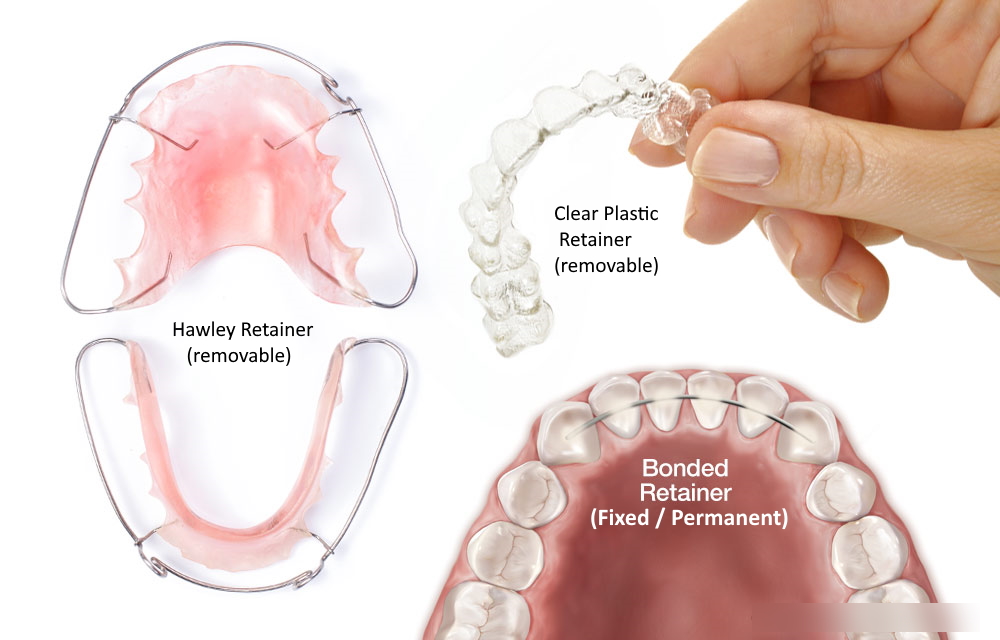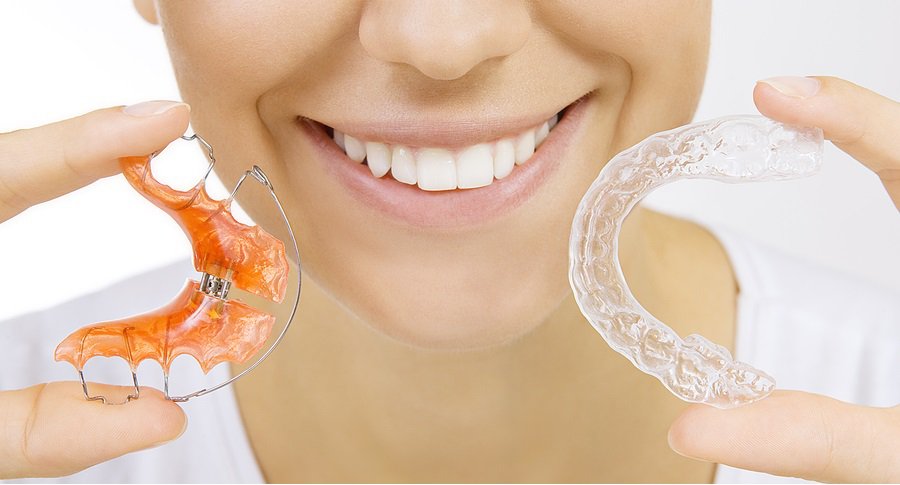Retainers
You've worked hard for your beautiful smile; keep it that way! Finally, your braces have been removed and your smile is beautiful, straight, and best of all, metal-free! However, your orthodontic journey isn't quite completed. To keep your smile looking its best, you'll have to wear a retainer to preserve and stabilize your results. Retainers are needed to control or limit potential changes in tooth position. They are used after braces treatment to hold teeth in their correct alignment while the surrounding gums, bone, and muscle adjust to the new positioning of your teeth.

Types of Retainers
Retainers are custom-made and can be removable or fixed.
- Hawley removable retainers typically include a metal wire that surrounds the front teeth and is attached to an acrylic that sits in the roof of the mouth. The metal wires can be adjusted to finish treatment and continue minor movement of the front teeth as needed. This is used on younger kids after Phase 1 treatment when baby teeth are still present.
- Clear plastic retainers, look similar to clear aligners and offer a more aesthetic alternative to wire retainers. This clear retainer may fits over the entire arch of your teeth. Adults and teen use these night time when sleeping. These require excellent compliance.
- Fixed retainers are wires bonded behind the bottom and/or top teeth. These are always working, 24/7, ensuring the teeth cannot move at all. They are often preferred because you don’t ever have to worry about forgetting to wear your retainer! It is often kept in place for many years, with periodic repairs.

Pros and Cons
- Removable retainers can be taken out for eating and hygiene routines.
- Removable retainers can get lost easily, so remember to keep yours in the case whenever you remove it to eat or brush.
- A fixed retainer is great if you don’t want to keep track of it, or if you don’t want to worry about how many hours per day it must be worn.
- Teeth with fixed retainers require a little extra attention to remove tartar while flossing. Patients with fixed retainers often must use floss threaders to pass dental floss through the small spaces between the retainer and the teeth.

